Acer Swift Edge SFA16-41 review: An incredible OLED display let down by mediocrity elsewhere
The Acer's OLED display and AMD CPU are good, but this machine is too ordinary in several other important areas
-
+
Fantastic OLED screen
-
+
Decent AMD processor
-
+
Slim and light chassis
-
-
Build quality issues
-
-
Disappointing keyboard
-
-
No Thunderbolt or card reader

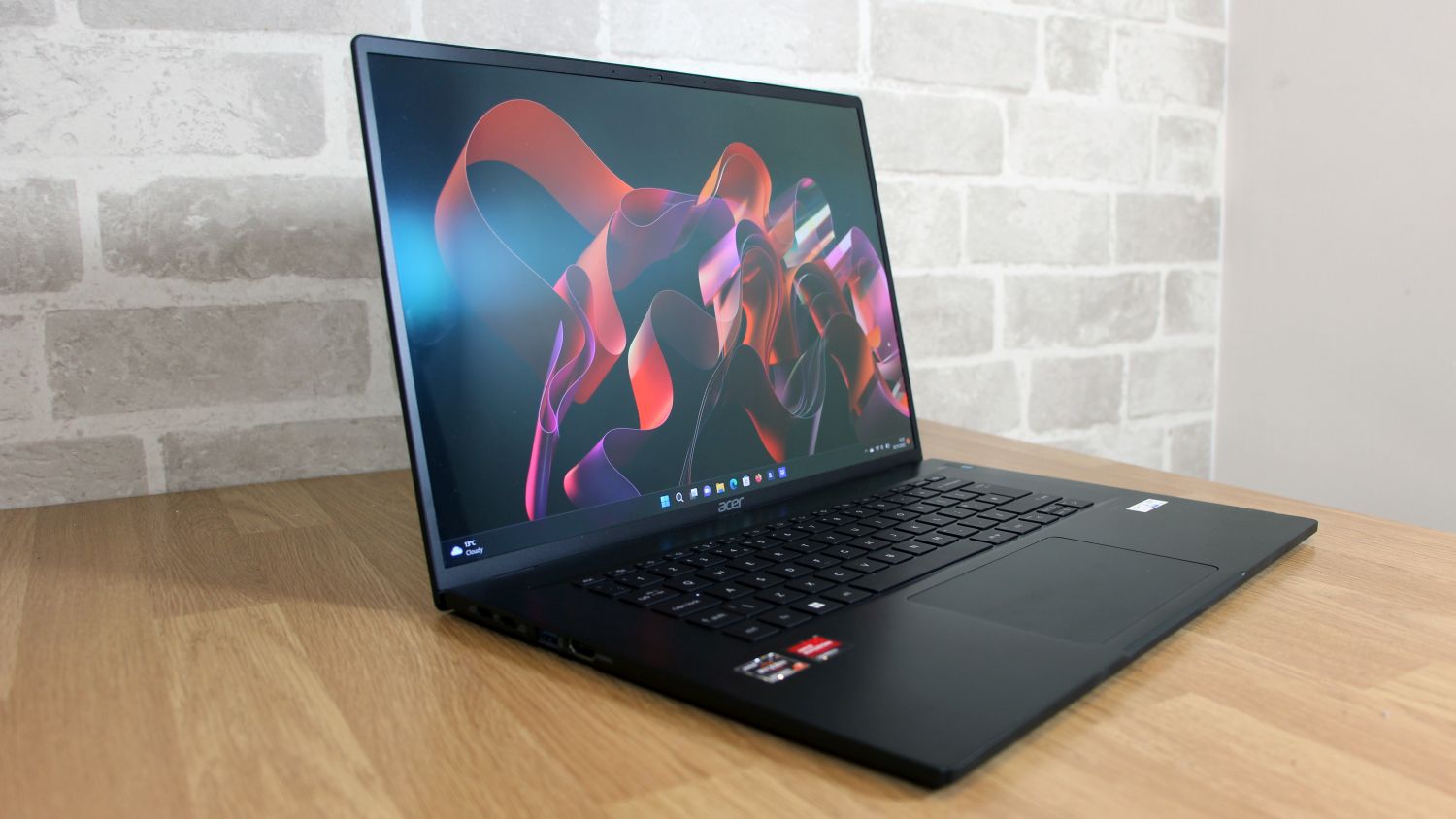
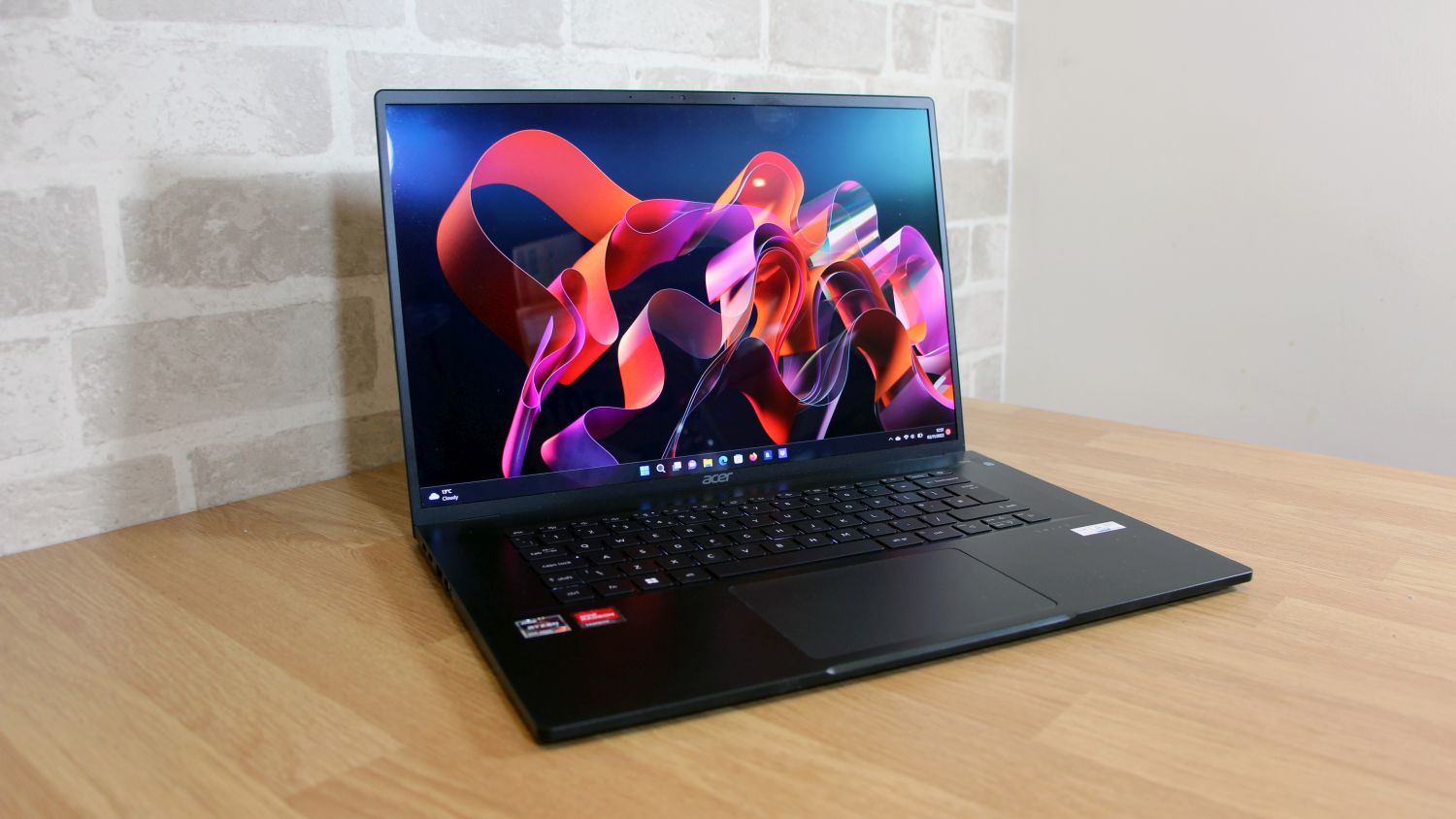
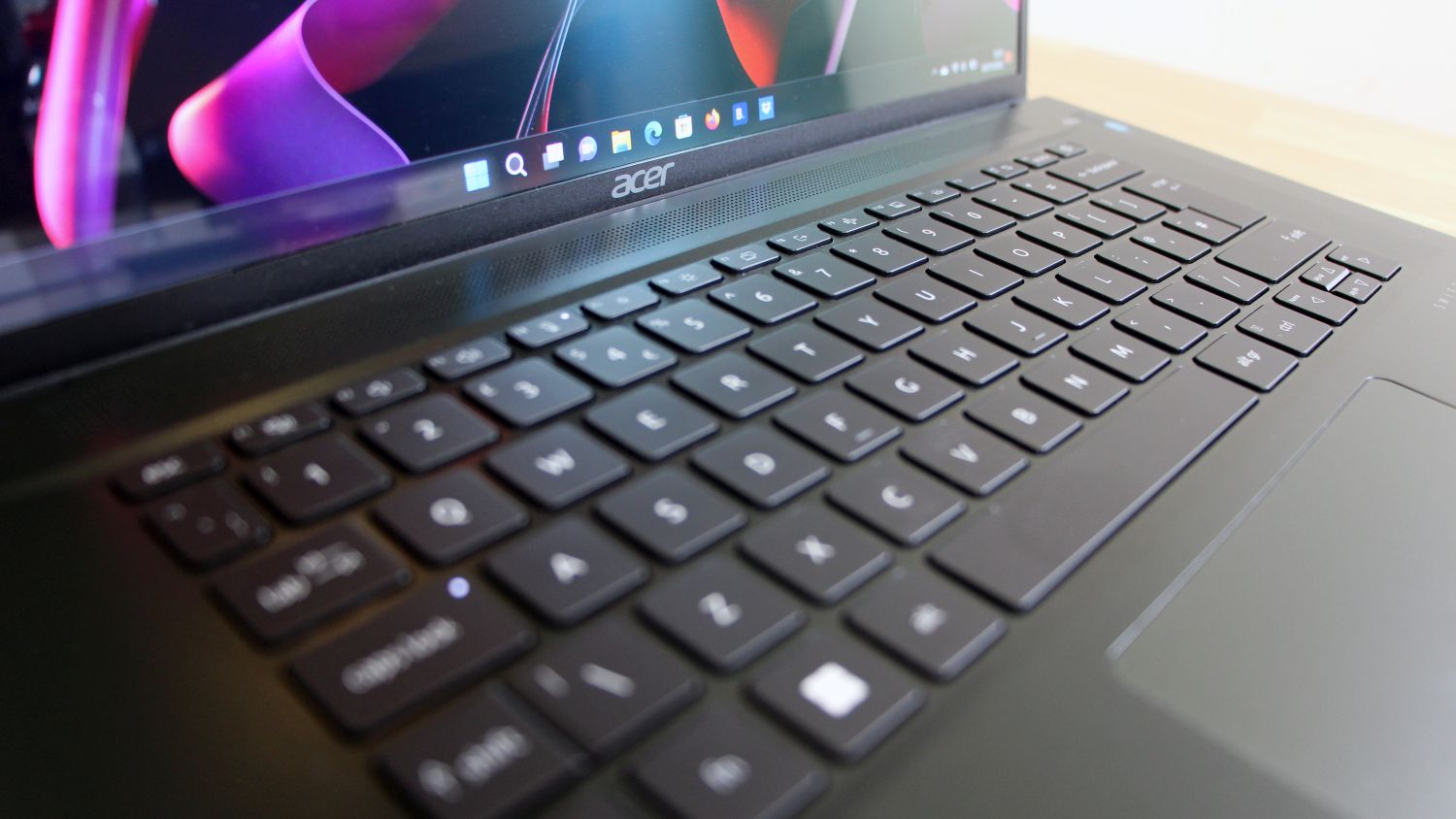
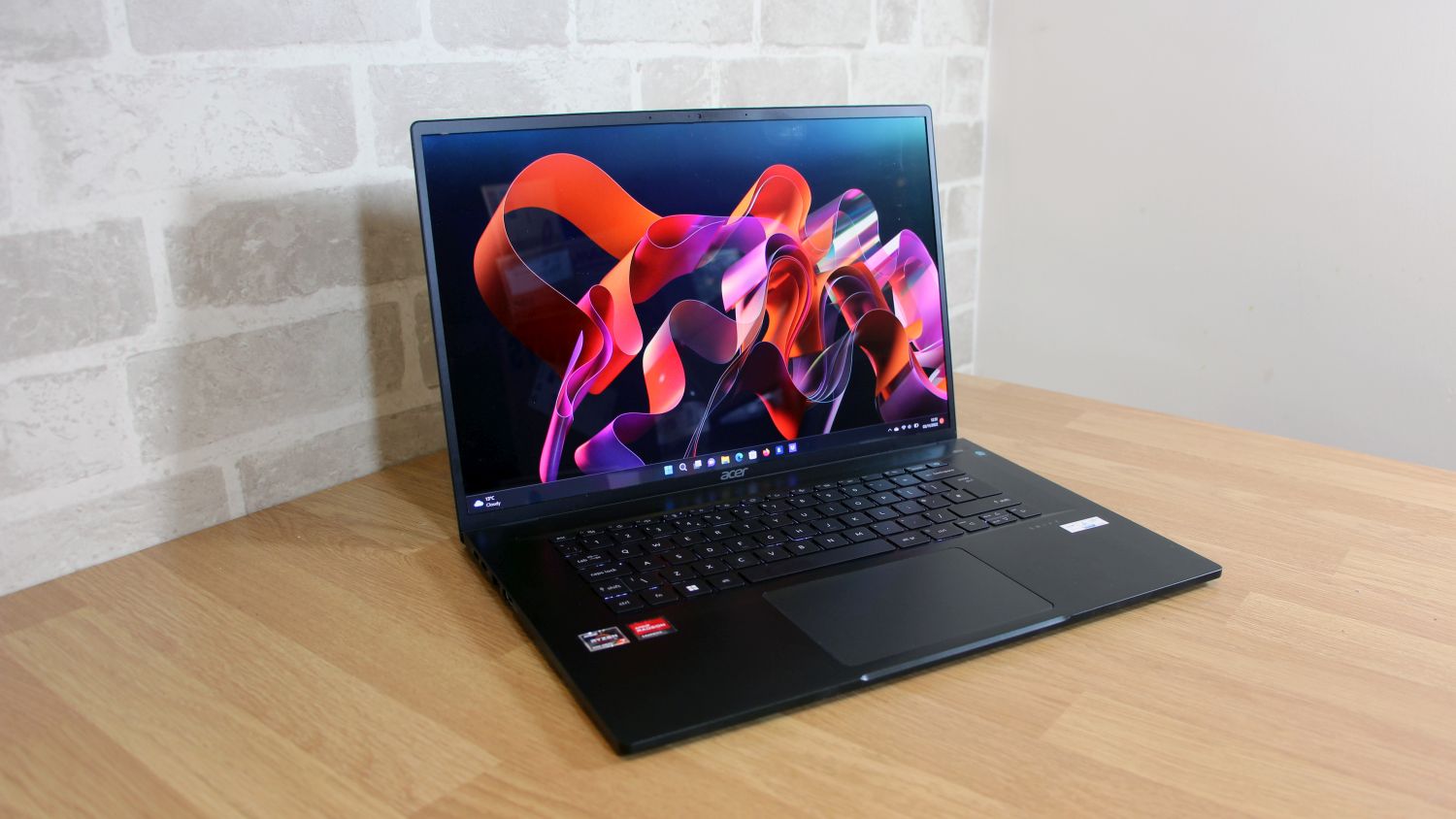
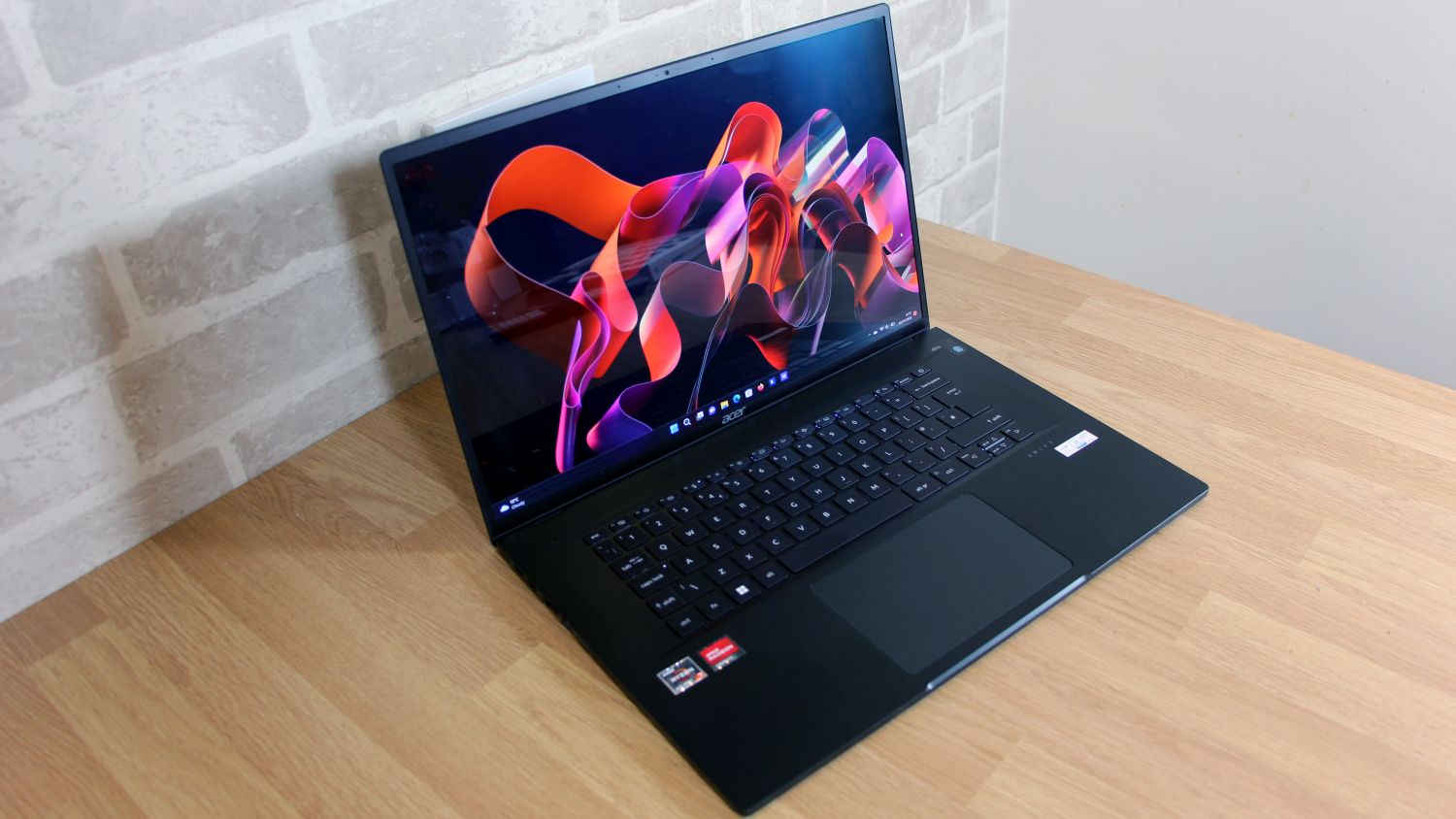
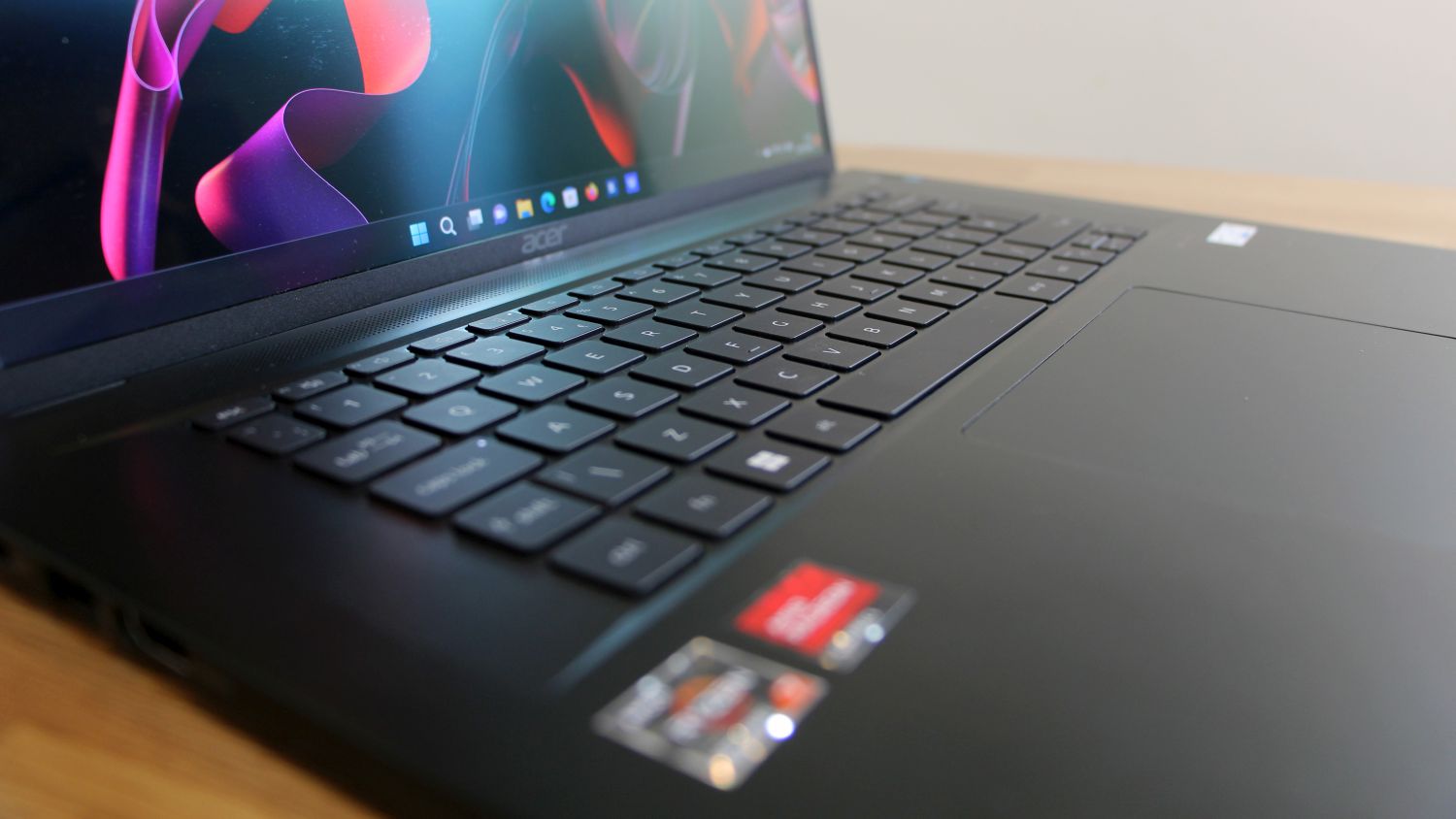
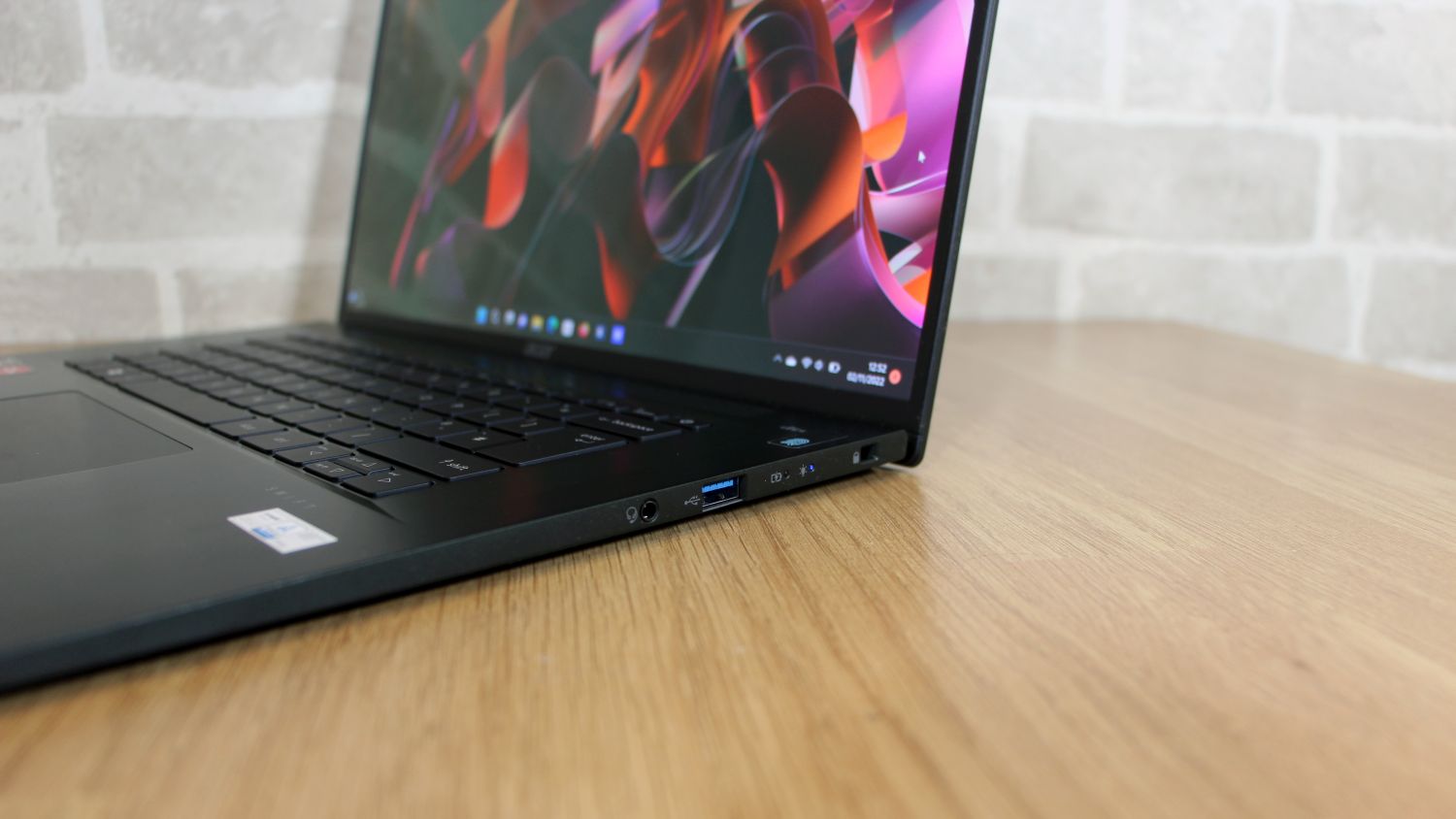
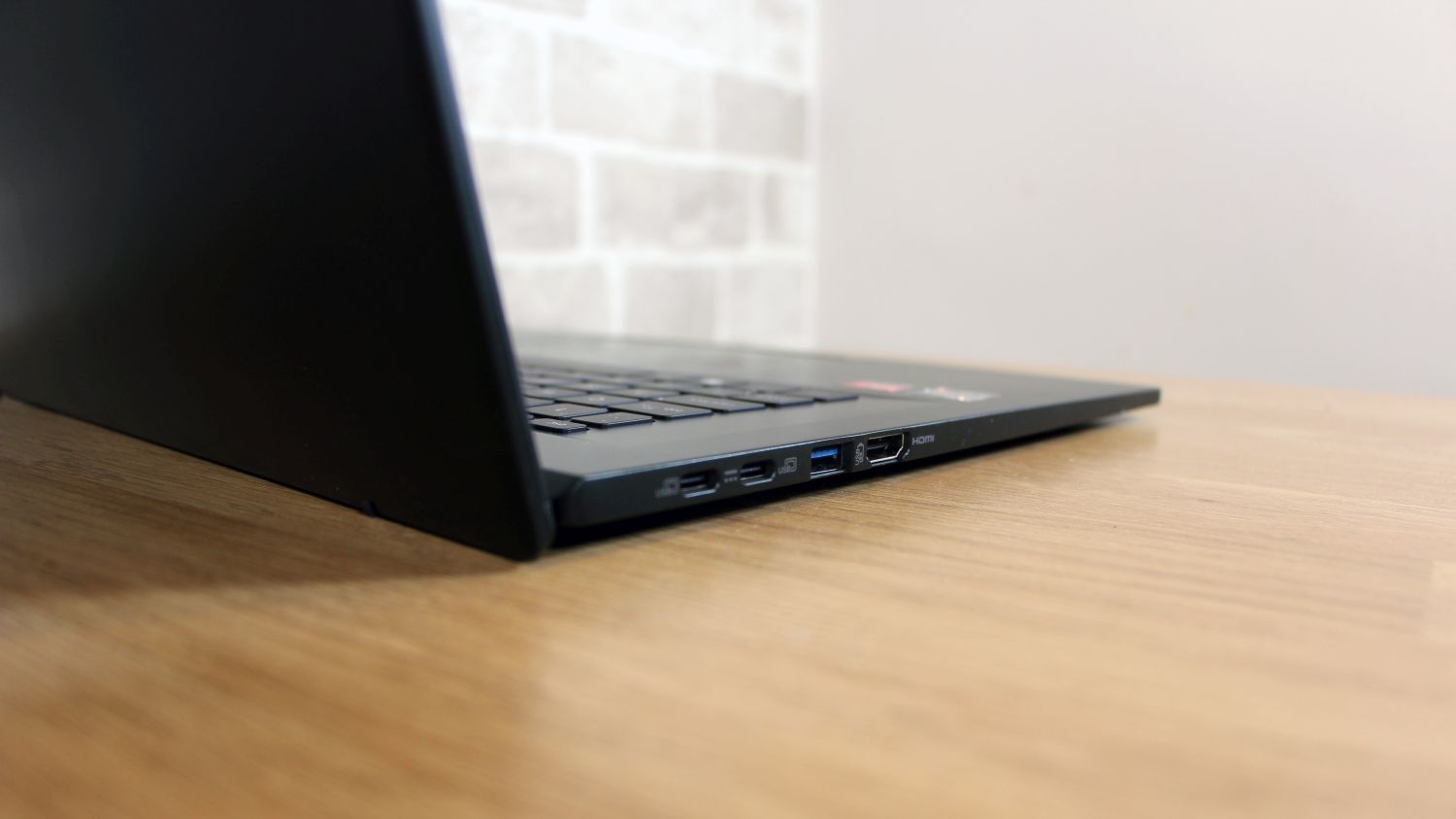
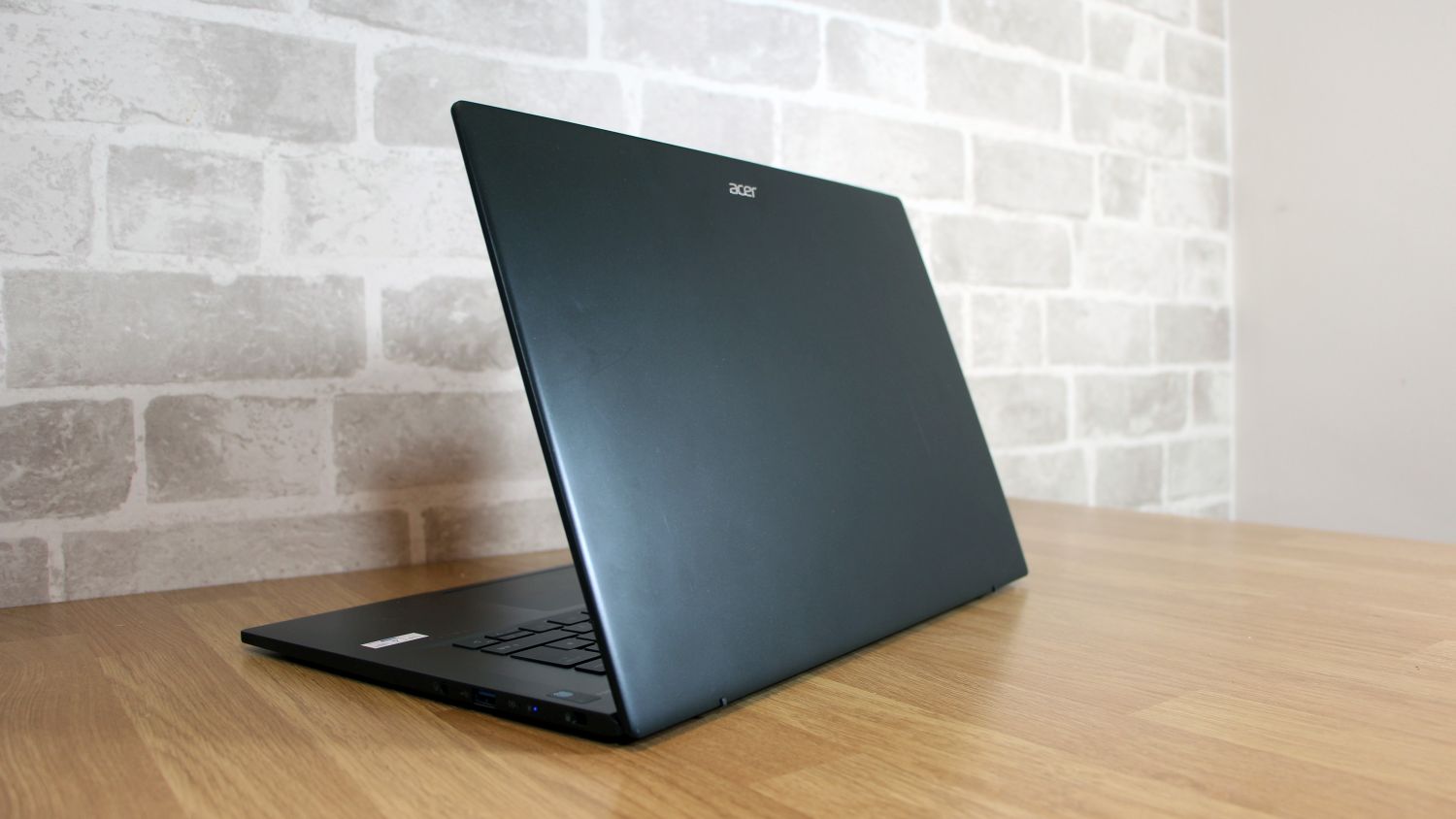
OLED is one of the big buzzwords in the laptop world right now, and the Acer Swift Edge SFA16-41 is the latest laptop to try and join the party. It's no wonder that manufacturers are rushing to cram OLED displays inside portables. This tempting technology swaps out traditional backlighting for individually-lit pixels, which allows displays to deliver perfect contrast and punchier colours.
Acer's latest laptop pairs its 16in OLED display with a thin, light chassis and a low-power AMD Ryzen processor. That's a lot to like on paper, and the price of £1,333 exc VAT isn't bad – barely any different from the Intel-based LG Gram 16, which costs £1,290 exc VAT for a Core i7 model.
Acer Swift Edge review: Design
Before you get to the OLED hardware, though, you've got to contend with the Swift's design – and there are lots to like in this department. Acer's notebook uses magnesium-aluminium alloy, and it looks the part; the design is dark and unfussy, with clean lines throughout. It's easily the equal of the LG in this department.

It performs well on the scales, too. The Acer weighs 1.18kg, so it's lighter than the LG, and it's slimmer, too – the Acer's 13mm body extends to 16mm once you include its rubber feet, but the Gram topped out at 17mm. The Acer is far slimmer and lighter than its beefier rivals, too. If you'd consider a Dell XPS 15 for a bit more power you'll have to accept a laptop that's 19mm thick and weighs at least 1.84kg. The Apple MacBook Pro 16 is only 17mm thick but weighs 2.1kg.
The Acer's biggest issue is its build quality. There's too much movement in the alloy around the keyboard, and the display is too easy to flex. There's also no sign of MIL-STD-810G testing. This build quality is not disastrous, but we'd recommend a protective sleeve. LG's rig was stronger, and the weightier Dell and Apple notebooks were better still.
Acer Swift Edge review: Keyboard and trackpad
The chassis weakness carries over to the keyboard. The buttons are shallow, light and flimsy, and it's too easy to see the metal moving as you hammer away. This typing gear is fine for work, but it doesn't have the crisp, robust feeling that's common on every rival – it's not particularly satisfying.
The layout disappoints, too. This laptop has lots of space, but the Acer still has tiny up/down keys and small punctuation buttons. The function keys are tiny, and there's no numberpad – something the LG does include. The trackpad is better: large, smooth and consistent, with responsive buttons. It's easily good enough for creative work and fast-paced multi-tasking, even if the accompanying keyboard can't quite keep up.

Acer Swift Edge review: Display
The OLED display is the undoubted star of the show. The 16in panel has a resolution of 3,840 x 2,400, so everything is pin-sharp, and the Acer matches every rival by deploying a 16:10 aspect ratio – so you get a bit more vertical space when compared to a shorter 16:9 display.
The colours are sensational. The OLED technology means creative work, movies, box sets and casual games look incredibly vibrant. The perfect black levels deliver fantastic contrast, too, so there's plenty of depth. The screen rendered 100% of the sRGB colour gamut at 166.9% volume, and it produced almost 100% of the Adobe RGB and DCI-P3 colour gamuts with volume figures beyond 100% – and the Delta E of 1.43 provides accuracy. This screen does a fantastic job with every colour you'll possibly need.
The panel's biggest issue is brightness. While it exceeds 500cd/m2 in HDR mode, during SDR workloads it only peaked at 378cd/m2. That's fine for indoor situations, but not bright enough for outdoor use. Nevertheless, the Acer's panel is easily better than the IPS hardware used inside the LG. Its contrast marginally exceeds the Mini LED tech inside the Apple, too, and you'll only get OLED tech inside the Dell if you spend at least £1,833 exc VAT.
Acer Swift Edge review: Hardware and performance
It's unusual to see an AMD laptop processor these days, but AMD's Ryzen 7 6800U includes eight multi-threaded cores and a top turbo speed of 4.7GHz, so it's decent on paper. On the graphics side, it's got an AMD Radeon 680M core with 768 processing units.
We've got no complaints about the rest of the Acer's internals: you get 16GB of dual-channel DDR5 memory and a 1TB SSD with impressive read and write speeds of 6,242MB/sec and 5,243MB/sec. Testing saw AMD's chip supply decent performance levels. In our image editing benchmark its score of 200 points snuck ahead of the 186 scored by the LG's Intel Core i7-1260P. Its video encoding score of 189 was thirty points beyond anything the LG could muster.
The two chips exchanged blows in Geekbench: the Acer's single-core score fell behind the LG but the Swift was faster in multi-core benchmarks. In Cinebench R23, the Acer returned single- and multi-core scores of 1,504 and 10,291, with the latter better than Intel's chip.

AMD's chip is a better choice for content creation than the Intel part, although this low-power CPU will still only handle modest photo and video work. Happily, you've got ample power for everyday multitasking and you won't struggle with loads of browser windows or office tools. Its integrated Radeon GPU also does a better job with casual games than Intel's Iris chip. If you do push the internals, you'll notice fan noise but the output was kept modest and on a similar level to the LG. The exterior didn't become too hot, either.
The Acer's biggest weakness comes from battery tests, which is no surprise when you consider the power-hungry OLED panel. In our standard video rundown test with the display at 170cd/m2 and airplane mode selected the Acer lasted for 9hrs 16mins, which is seven hours behind the LG and the MacBook. You'll just about get through a working day with the Acer, but not your commute or evening.
If you do want more power then the Dell and Apple laptops fit the bill, but those notebooks are larger, heavier and more expensive than the Acer – the Dell starts at £1,624 exc VAT if you want a Core i7 CPU and the cheapest MacBook Pro 16 costs £1,999 exc VAT.
Acer Swift Edge review: Ports and features
Acer's laptop includes two USB 3.2 Gen 2 Type-C ports and two USB 3.2 Gen 1 ports, with one full-size USB port on each side. Each USB-C port also handles DisplayPort outputs and charging, although one of them is required to power the notebook and it's annoying that both sit on the left-hand edge – that can make attaching peripherals and dongles tricky.
Elsewhere, physical connectivity comes from an HDMI 2.1 output and an audio jack, but there's no Thunderbolt 4 support and no card reader. Above the display you'll find a 1080p webcam that delivers decent quality – but no facial recognition, and no privacy shutter. If you want to log on with biometrics, you'll have to use the fingerprint reader in the power button. Internal connectivity comes from the usual pairing of dual-band Wi-Fi 6E and Bluetooth 5.2, but there's no room for wired internet. The Acer has good security credentials with a TPM 2.0 chip and Microsoft Pluton processor.
LG's similarly slim machine includes an Intel processor, so it's got Thunderbolt – and it has a card reader and facial recognition. The larger Dell XPS 15 ticks those boxes, too, and the Apple notebook adds Thunderbolt and SD support but it doesn't include full-size USB. It's a mediocre set of features, and the Acer feels underwhelming in another key area: software. Boot this machine and you'll see Dropbox, Evernote, loads of card games, some CyberLink media tools and even media apps like Spotify and Disney+. You might want to keep some apps, but it makes the Swift feel cluttered and low-rent and doesn't provide a clean, enticing experience.
Acer Swift Edge review: Verdict
The OLED display is the Acer's best component: this 16in panel is bold and immersive, with superb colours and a high resolution. If you want a display to make everyday tasks and creative workloads pop, this screen will get the job done and then some.
Elsewhere, though, the Acer stumbles. Its chassis is slim and light, but not sturdy, and its keyboard is disappointing. The low-power AMD processor is effective, but the battery is underwhelming, and the Acer has some missing connectivity features and annoying software. The superb screen and decent processor make the Acer Swift Edge an effective lightweight workhorse, but for the same cash you could have the robust and longer-lasting LG Gram 16 if you're happy enough to forego the OLED tech.
Acer Swift Edge Specifications
| Processor | 2.7GHz octo-core AMD Ryzen 7 6800U |
| RAM | 16GB DDR5 |
| Graphics | AMD Radeon 680M |
| Storage | 1TB SSD |
| Display | 16in 3,840 x 2,400 OLED |
| Operating system | Windows 11 Home 64-bit |
| Connectivity | Dual-band 802.11ax WiFi, Bluetooth 5.2 |
| Ports | 2 x USB 3.2 Gen 2 Type-C/DisplayPort/Power, 2 x USB 3.2 Gen 1, 1 x audio, 1 x HDMI 2.1 |
| Dimensions | 356 x 241 x 16mm (WxDxH) |
| Weight | 1.18kg |
Get the ITPro daily newsletter
Sign up today and you will receive a free copy of our Future Focus 2025 report - the leading guidance on AI, cybersecurity and other IT challenges as per 700+ senior executives
Mike Jennings has worked as a technology journalist for more than a decade and has been fascinated by computers since childhood, when he spent far too long building terrible websites. He loves desktop PCs, components, laptops and anything to do with the latest hardware.
Mike worked as a staff writer at PC Pro magazine in London for seven years, and during that time wrote for a variety of other tech titles, including Custom PC, Micro Mart and Computer Shopper. Since 2013, he’s been a freelance tech writer, and writes regularly for titles like Wired, TechRadar, Stuff, TechSpot, IT Pro, TrustedReviews and TechAdvisor. He still loves tech and covers everything from the latest business hardware and software to high-end gaming gear, and you’ll find him on plenty of sites writing reviews, features and guides on a vast range of topics.
You can email Mike at mike@mike-jennings.net, or find him on Twitter at @mikejjennings
-
 ‘Phishing kits are a force multiplier': Cheap cyber crime kits can be bought on the dark web for less than $25 – and experts warn it’s lowering the barrier of entry for amateur hackers
‘Phishing kits are a force multiplier': Cheap cyber crime kits can be bought on the dark web for less than $25 – and experts warn it’s lowering the barrier of entry for amateur hackersNews Research from NordVPN shows phishing kits are now widely available on the dark web and via messaging apps like Telegram, and are often selling for less than $25.
By Emma Woollacott Published
-
 Redis unveils new tools for developers working on AI applications
Redis unveils new tools for developers working on AI applicationsNews Redis has announced new tools aimed at making it easier for AI developers to build applications and optimize large language model (LLM) outputs.
By Ross Kelly Published
-
 Google layoffs continue with "hundreds" cut from Chrome, Android, and Pixel teams
Google layoffs continue with "hundreds" cut from Chrome, Android, and Pixel teamsNews The tech giant's efficiency drive enters a third year with devices teams the latest target
By Bobby Hellard Published